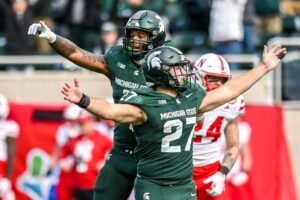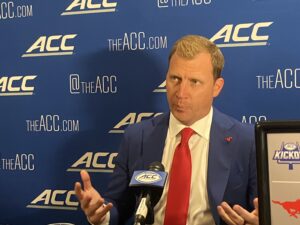While many other countries around the world offer sports scholarships to students, nowhere else in the world does it quite like the US. It’s undoubtedly a very effective system for developing the most talented players, who may have first been identified as early as seventh or eighth grade. It also means that many who might not otherwise be able to afford a college education can actually receive one. But, more and more, it has made the headline sports like college football and basketball more like a business than elements of education – and not everyone is completely happy about this state of affairs.
This is not necessarily a new phenomenon. As long ago as 1906 the president of Duke University wrote an essay criticizing the commercialization of college sport – so he would undoubtedly be lost for words today. Rough estimates have come to the conclusion that college football is a business with a turnover of $4 billion a year, a figure that continues to rise season by season.
How College Football Became A $4 Billion Business
Where The Money Comes From
This is all the more remarkable as, under the rules laid out, the NCAA has charitable status for tax purposes. There are a number of sources of income for college football, all of which go to contribute to the headline figure. Unquestionably, the biggest single one of these comes from multimedia rights and, most specifically, for TV. College football has been gaining an ever-wider appeal for fans – perhaps wanting to get a first look at the next Patrick Mahomes or Tom Brady.
It’s also increasingly appealing for fans of sports betting as it provides a whole different set of wagering opportunities. In terms of the revenue generated from media deals, it’s inevitably the Power 5 conferences that see the biggest rewards. The highest of these is the SEC at $433 million a year followed by PAC-12at $339 million. Then comes the ACC at $277 million and the Big 12 Conference at $237million. Add other online media deals to these and it’s easy to see just why broadcast rights become more and more significant.
Of course, an integral part of the appeal of college football is its local nature. This means that fans are attracted from all round the local area to attend the games themselves. What’s more, for many of the ticket prices can be even higher that you might expect to pay to see a standard mid-season NFL game. To take the SEC as an example, they not only lead the way in TV rights revenue, their prices are also the highest averaging out at $168 a ticket. And, as anyone who has ever attended a match of any kind will tell you, it doesn’t stop there. Add on all those extras like car parking, food, drinks and merchandise and it’s estimated that per school this adds up to an additional income of $4.7 million a year.
Tickets And Sponsorships
Then add this to the $62 million that the ticket sales themselves raise and we’re talking about some serious money. With sponsors galore It hardly needs saying that, year by year, college football is becoming more and more like the professional game and it has followed this in another important respect – sponsorship. Some of the country’s biggest brands have been quick to attach themselves to college football from sportswear manufacturers to soft drinks, as well as a whole host of names from other sectors. Because they are not allowed to attach themselves to particular players these brands have had to adopt other strategies to generate a return on their investment.
One particular favorite has been to claim naming rights on major games and the many different bowls that are competed over. So today you’ll find names like Capital One, Playstation, Goodyear and Northwestern Mutual all attaching themselves to these games. Similar to sponsorships, but more low-key, all of the major names in college football also rely quite heavily on donations. These may come from local philanthropists and/or alumni of the institutions in question. It’s also been found that the more successful the college in question is, the higher these donations may become. So, in this respect, it’s a virtuous circle in which success breeds success.
A Controversial question
While it’s obviously good news on a superficial level for colleges to be gaining so much revenue through football, it’s not without its controversies. The first of these is just how much college football coaches get paid. A prime example is Florida State’s recently appointed head coach Mike Norvell who is said to have signed a six-year $26.5 million contract, a sum way beyond the hopes of even the most respected academic. Then there’s the question of the pay received by the players themselves – $0 dollars per year. Yes, many are on scholarships of around $28,000 a year but often this doesn’t even cover 100% of the college fees. That said, those who do succeed can potentially go on to become some of the highest paid people in the US – and they’ll certainly have become accustomed to being in a billion dollar sport even before they’ve left college






